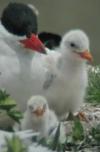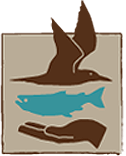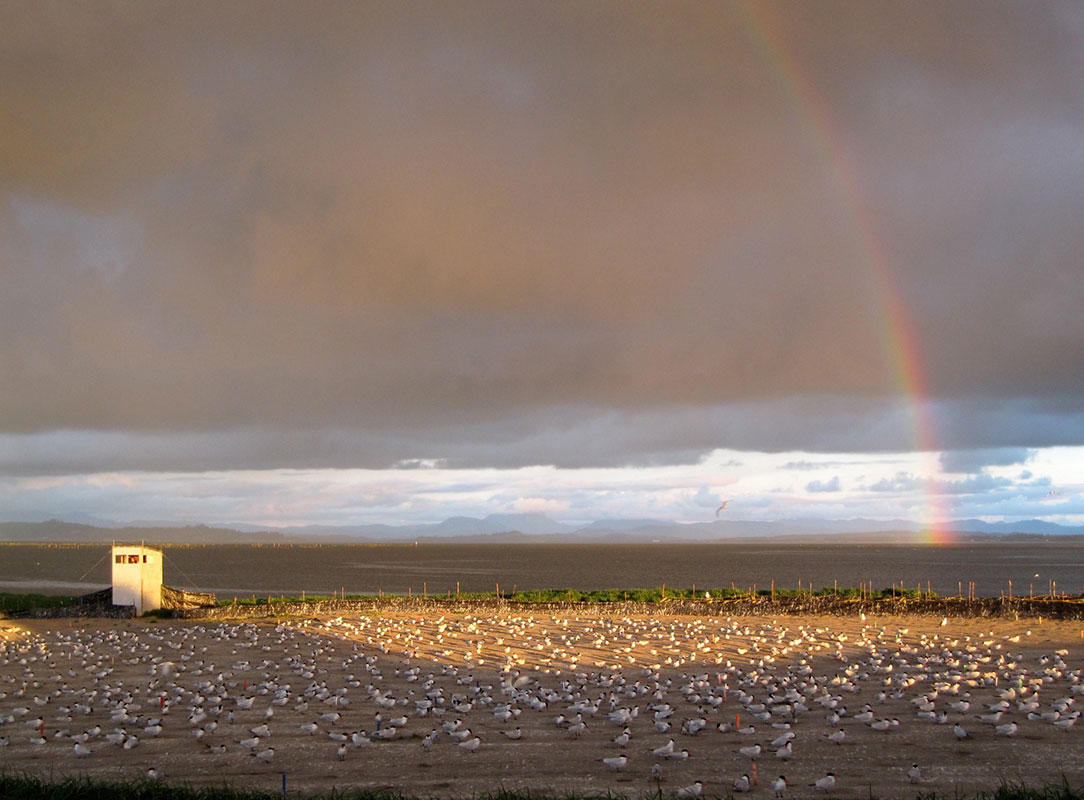 Caspian Tern Nesting Ecology and Diet Composition in San Francisco Bay, USA
Caspian Tern Nesting Ecology and Diet Composition in San Francisco Bay, USA
Caspian terns (Hydroprogne caspia) nesting in the Columbia River estuary between Oregon and Washington, USA, are known to inflict significant losses to threatened juvenile salmonids (Oncorhynchus spp.), but the impact of Caspian terns nesting in San Francisco Bay on survival of juvenile salmonids out-migrating through the Bay are unknown. We investigated breeding population size, nesting ecology, and diet of Caspian terns in the San Francisco Bay area during 2003-2009 to help assess the potential for negative effects on threatened salmonids in the Bay Area. There were six breeding colonies of Caspian terns in the Bay Area during 2009, when a total of about 830 breeding pairs nested there. This represented a 36% decline in numbers of Caspian terns nesting in the Bay Area compared to 2003, when our study commenced. This decline was primarily a consequence of abandonment of the Knight Island colony, where about 300 pairs nested in 2003, and a 21% decline in the size of the Brooks Island colony, the largest colony in the Bay Area. Nesting success of Caspian terns at colonies in the Bay Area also declined substantially (69%), largely due to the major decline (77%) in nesting success at Brooks Island from 2003 to 2009. Among-colony variation in colony size and nesting success was attributable to (in order of decreasing importance) (a) area of un-vegetated sand nesting habitat on islands, (b) nest predation, kleptoparasitism, and nest site competition from gulls, and (c) human disturbance. Marine forage fishes (silverside [Atheridae], surfperch [Embiotocidae], anchovy [Engraulidae], and others) were the predominant prey types in Caspian tern diets from San Francisco Bay; however, diet composition varied among colonies, suggesting that fish assemblages near colonies differed and nesting terns tended to forage near their colony. Juvenile salmonids comprised 22.9% of the diet of terns nesting at Knight Island in the North Bay, 5.3% of the diet of terns nesting on Brooks Island in the Central Bay, and 0.1% of the diet of terns nesting at Eden Landing in the South Bay. Our results suggest that construction of suitable tern nesting islands in the South Bay will help maintain and restore the breeding population of Caspian terns in the region without significantly enhancing mortality of salmonid stocks of conservation concern in the San Francisco Bay area.
- K. Collis, D.D. Roby, K.W. Larson, L.J. Adrean, K. Nelson, A.F. Evans, D, Battaglia, D. E. Lyons, T. Marcella, and A. Patterson
Click here to view complete report



